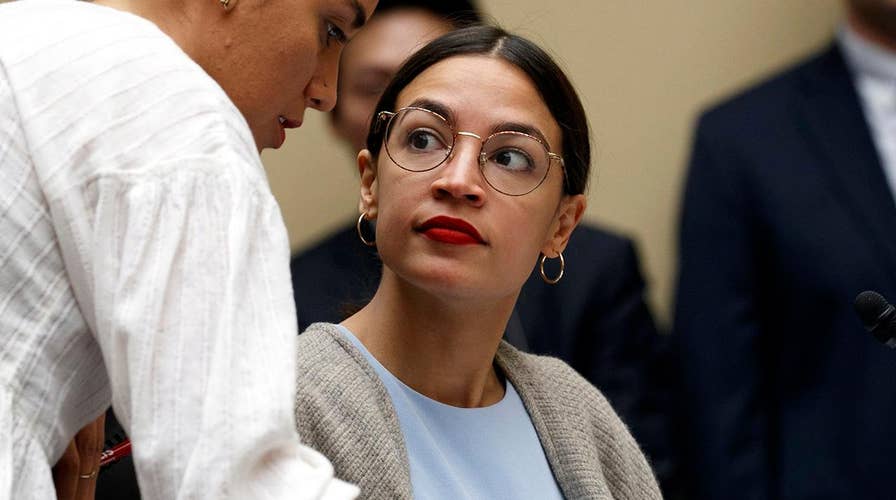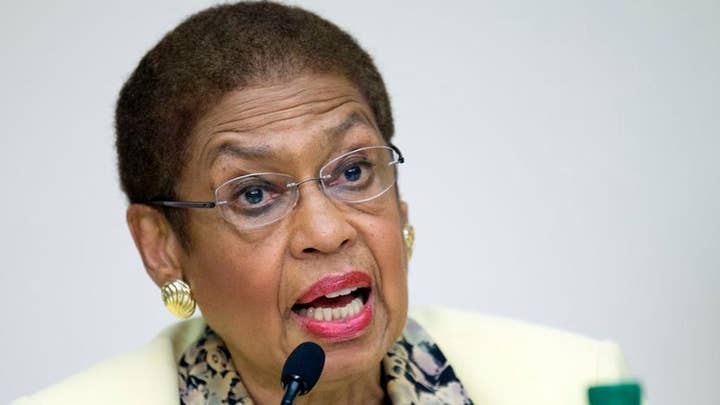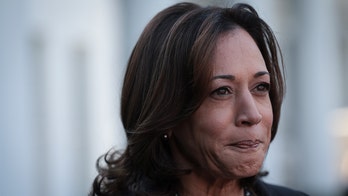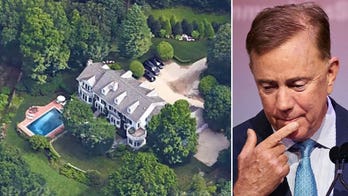Democrats lead new charge for DC statehood
House Democrats hold first hearing on the issue in 25 years; senior Capitol Hill producer Chad Pergram reports.
You may not have thought about “The Missouri Compromise” since sixth grade social studies.
Political equilibrium was crucial when it came to admitting states into the union in the early 19th Century. That’s why the Missouri Compromise involved balance. The U.S. admitted Maine as a free state in March, 1820. Missouri came into the union simultaneously as a slave state. Slavery was barred north of the 36th parallel, where most of Missouri sits. So, policymakers crafted a deal to maintain the slavery prohibition – but admit Missouri – and offset it with the admission of Maine.
Even the essence of the U.S. Congress is constructed around The Great Compromise of 1787 – sometimes called the Connecticut Compromise. Small states were concerned about big states quashing their power in Washington. So, the Great Compromise allocated representation in the House based on population. But every state was equal in the Senate, regardless of size.
The Founders applied fairness.
HOUSE APPROVES DC STATEHOOD BILL, GOP CALLS MOVE DEM 'POWER GRAB'
And, such was the case when the U.S. admitted the newest states within a few months of one another in 1959: Alaska and Hawaii. Both states are small in population. But the states served as political counterweights for one another. Alaska was admitted as the “Democratic” state. Hawaii was the “Republican” state – although the politics of both states evolved over time. The states in essence “flipped.” Alaska now drifts more to the right and Hawaii, perhaps even further to the left. That said, voters have elected governors and House members/senators in recent years who don’t comport with the overall, current politics of both states.
But, the key to admitting Alaska and Hawaii to the union was equity.
The House of Representatives just approved a bill to make Washington, DC the 51st state. The measure, appropriately named “H.R. 51,” would technically bring Washington into the U.S. as a commonwealth, like Kentucky, Virginia, Massachusetts and Pennsylvania. They would call the new state “Douglass Commonwealth,” named after abolitionist Frederick Douglass. Thus, the new political subdivision would still be “DC.”
James Madison was skeptical of granting any one jurisdiction extra power, only because it hosted the seat of government. In Federalist #43, Madison wrote about the necessity of a “federal district” for the government, outside the boundaries of any given state. Madison argued that otherwise, “the public authority might be insulted and its proceedings be interrupted, with impunity.”
Article I, Section 8 of the Constitution calls for the creation of a special district, governed by Congress “not exceeding Ten Miles square.” That is Washington, DC. The House bill would shrink the federal district to include some monuments, the Capitol and the White House.
So, in the 18th Century, they carved the District of Columbia out of land which geographically seemed more appropriate for Maryland and Virginia (See. Two states, again).
The federal government retroceded the southwestern portion of the District of Columbia to Virginia in 1846. That helped maintain a slave trade in what is now Alexandria, VA along the Potomac River. Old boundary stones denoting the former DC line remain visible this day in Alexandria. One is fenced off in a church parking lot. Another is just steps from the King Street Metro.
From almost the beginning, residents of Washington, DC were taxed. They fought in wars. Yet, they had had no vote on Capitol Hill. Only states and commonwealths are permitted to send members to the House and Senate. They eventually grew the electoral college to 538 from 535 so that DC would have three electoral votes – the same footprint it would have for a state its size: two senators and a House member.
HOUSE PASSES DC STATEHOOD BILL: HERE’S HOW IT WOULD WORK
Congress served as a form of a super city council over DC for decades, only ceding some of that power in recent years. DC has sent a non-voting representative to the House since the early 1970s. The House grants Del. Eleanor Holmes Norton, D-D.C., practically the same privileges afforded any other member. Norton has an office. She can sponsor legislation. She can sit on committees. She can even vote on the floor when the House transmogrifies itself into a special parliamentary construct known as “The Committee of the Whole.” However, Norton cannot cast a ballot in the House itself.
DC has two shadow senators, neither of which have any formal parliamentary recognition on Capitol Hill.
This is why Washington, DC, slapped the phrase “Taxation Without Representation” on its license tags back in the early 1990s. After all, taxation without representation is the quintessential American battle cry, dating back to the Boston Tea Party.
There has been a push to alter DC’s political status for decades. Perhaps retrocede the “Maryland” part to Maryland. Convert the city into a state. Grant Washington, DC a vote on the House floor.
The House first voted to make DC a state in November, 1993. That bill failed badly. Had it eventually succeeded, DC would have emerged as a state called “New Columbia.”
In March, 2007, House Democrats engineered a plan (which was later yanked off the floor) to grow the size of the House by two seats to 437. DC would get a seat – and it would presumably be Democratic. The offset was found in Utah. Some Republicans argued the 2000 Census fleeced Utah out of an additional House seat. Arguably, a new seat in Utah would go to the Republicans. So, the new, 437-member House would feature two seats, offsetting one another. But that bill blew up even before a vote.
The House of Representatives approved the DC statehood bill the other day, 232-180. It marked the first time any such legislation ever moved through either body of Congress.
And, if DC becomes a state, it’s likely it would send two Democratic senators and one Democratic House member to Capitol Hill.
Washington, DC Mayor Muriel Bowser, a Democrat, argues that opposition to statehood hinges on politics and race.
“Let’s fight back against the cries that we’re too liberal or we’re too black or that there are too many Democrats,” said Bowser.
CLICK HERE TO GET THE FOX NEWS APP
“The answer is simple,” proclaimed Sen. Tom Cotton, R-Ark., in a feisty floor speech about DC statehood. “The Democrats want DC to be a state because they want two new Democratic senators in perpetuity.”
That’s not necessarily the case. Remember the earlier point about how Alaska and Hawaii switched politics? But unlike the gambit for Alaska and Hawaii, there is no equalizer in the case of statehood for Washington, DC now. There was even a counterbalance with the DC and Utah seats in the 2007 bill.
House Speaker Nancy Pelosi, D-Calif., sidestepped an inquiry from yours truly about the lack of a political offset when it came to statehood for DC.
“Forgive me for not valuing your question to the extent you’re valuing it. The fact is that people in DC risk their lives. Fight our wars,” said Pelosi.
The key to statehood for Douglass Commonwealth is a presidential signature. President Trump opposes statehood. So statehood isn’t happening any time soon. And, of course, the United States Senate. Senate Majority Leader Mitch McConnell, R-Ky., won’t bring up the DC bill. So this issue is dead – at least until 2021.
“Bye, bye, Mitch!” declared Norton. “We’re going to take the Senate and get DC statehood.”
Democrats are bullish on seizing the Senate from GOPers next year – and winning the White House.
But not so fast.
You need 51 Senate yeas to make Washington, DC the 51st state. But 60 votes to break a Senate filibuster. And without an offset for DC, Senate Republicans are more than happy to provide their own counterbalance.






